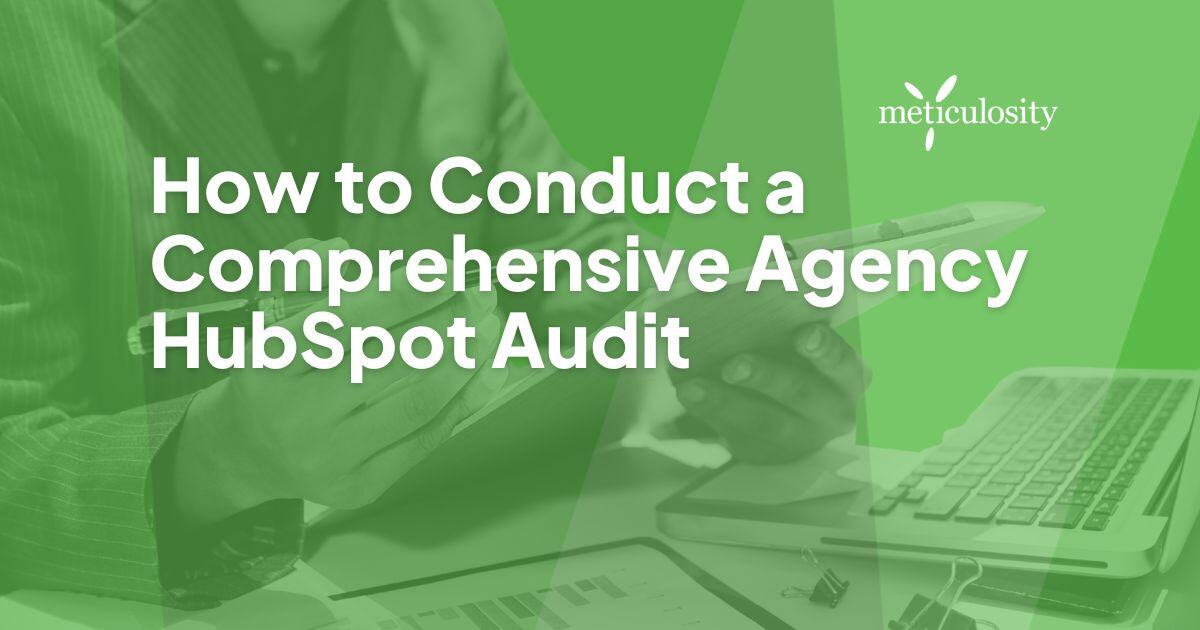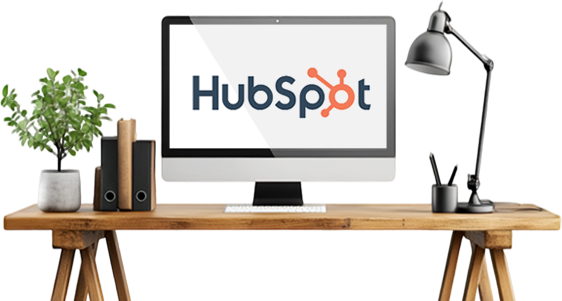Why HubSpot Audits Are Essential for Success
In today's competitive market, ensuring your HubSpot portal runs optimally is essential for delivering exceptional client results. A comprehensive HubSpot audit uncovers inefficiencies and identifies growth opportunities that might otherwise go unnoticed. This process isn't just about finding problems—it's about setting a clear path toward improved performance and streamlined operations.
Want to optimize your HubSpot portal? Explore Meticulosity’s HubSpot Portal Audits to uncover actionable insights and drive growth for your clients.
Assessing Data Quality and Uniformity
Evaluating your current data management practices is essential. Many organizations may not realize that up to 25% of their data might be inaccurate, impacting overall performance. To combat this, regularly clean and verify your data to maintain its integrity. Implement data validation rules and utilize deduplication tools to enhance consistency. One core aspect of a HubSpot audit is assessing how well tools and features are used. Key steps include:
- Reviewing the usage rates of marketing, sales, and service features.
- Identifying underutilized features that could improve performance.
- Eliminating redundant tools to streamline operations.
By fostering a culture of accuracy and consistency, you enhance your agency's ability to deliver precise insights and recommendations. This attention to detail not only supports better decision-making but also reinforces your reputation as a reliable and professional partner.
Examining Marketing and Sales Coordination
A successful agency HubSpot audit necessitates an in-depth look at how marketing and sales teams work together. Start by assessing whether marketing campaigns are effectively supporting sales objectives. Pinpoint any gaps that could be hindering the achievement of sales goals and identify areas for improvement.
Encourage a culture of open communication and regular collaboration between marketing and sales teams. Establish shared objectives to ensure both departments are working toward common goals. Utilize integrated tools within HubSpot that facilitate seamless information flow and real-time updates. This will help both teams stay aligned and informed, leading to more cohesive strategies and better results.

Assess the quality of leads generated by marketing and how they are being handled by the sales team. Ensure there is a clear process for lead scoring and nurturing, so high-quality leads are prioritized and converted more efficiently. Look at the content and messaging used in marketing campaigns to confirm they resonate with the target audience and support the sales team's efforts.
Review the use of HubSpot's CRM features to ensure they are being leveraged effectively for both marketing and sales activities. This includes the proper use of contact records, deal pipelines, and task management tools. By streamlining these processes, you enhance the efficiency of both teams and improve overall performance.
Conduct regular alignment meetings to discuss performance metrics, review campaign results, and adjust strategies as needed. These sessions should be data-driven and focused on actionable insights that drive continuous improvement.
By fostering a collaborative environment and utilizing HubSpot's robust set of tools, you can enhance coordination between marketing and sales teams, ultimately driving better outcomes for your clients.
Communicating Audit Results to Clients
Effective communication of audit results is crucial for client satisfaction and the successful implementation of your recommendations. Here’s how to present audit results effectively:
- Prepare a digestible report: Use simple language and include visuals like graphs and charts to highlight key insights.
- Focus on actionable steps: Break down recommendations into clear, manageable actions.
- Tailor suggestions: Address each client's unique challenges and objectives.
- Encourage dialogue: Invite questions and provide additional context during presentations.

By delivering clear, actionable, and customized audit results, you reinforce your agency’s expertise and commitment to client success. This not only builds trust but also encourages long-term partnerships based on transparency and results-driven strategies.
Conclusion
A thorough HubSpot audit is a powerful tool for identifying inefficiencies and optimizing performance. By addressing areas like data quality, marketing and sales alignment, and tool utilization, you can deliver actionable insights that drive meaningful improvements.
Regular audits and continuous monitoring are key to sustained growth. By fostering a proactive, detail-oriented culture, you enhance your agency’s reputation as a trusted partner, driving long-term client success.
Ready to unlock your HubSpot portal’s full potential? Learn more about HubSpot Portal Audits to take the first step toward exceptional results.
Frequently Asked Questions
1: How often should an agency conduct a HubSpot audit?
Conducting an audit at least annually is advisable. Additionally, audits should be performed whenever there are significant organizational changes or shifts in strategic goals.
2: What are the common challenges faced during a HubSpot audit?
Common challenges include data inconsistencies, misalignment between marketing and sales teams, and effectively communicating complex findings to clients.
3: How can I ensure my audit recommendations are implemented effectively?
Provide a detailed implementation plan with clear steps, responsibilities, and timelines. Maintain regular follow-up meetings to track progress and offer ongoing support to address any obstacles.
4: What tools can help maintain data quality in HubSpot?
Utilize data validation rules, deduplication tools, and automated monitoring systems to ensure data accuracy and consistency. Regularly review and update your data quality framework to adapt to evolving business needs.
5: How can I improve collaboration between marketing and sales teams using HubSpot?
Foster open communication and regular collaboration through integrated tools that enable seamless information flow and real-time updates. Establish shared objectives to ensure both teams work towards common goals, enhancing overall performance.







